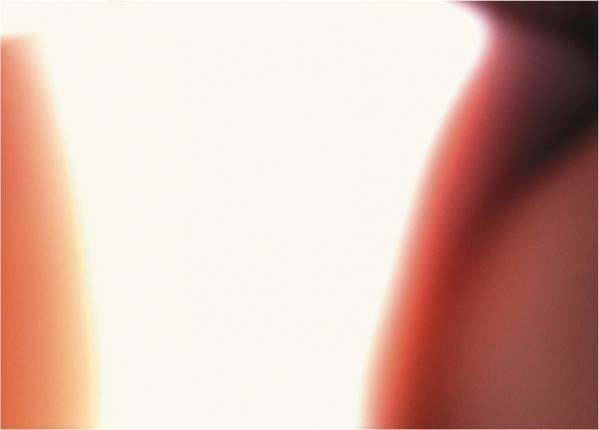Parasite
Parasite
Øystein Aasan - David Edward Allen - Viktoria Binschtok - Max Frisinger
Franziska Furter - Aubrey Heichemer - Maureen Jeram - Joyce Kim
Antonia Low - Caitlin Masley - Florian Neufeldt - Alex Schweder
curated by David Edward Allen and Maureen Jeram
Polite Parasites
By Isabelle Moffat
The parasite of this show’s title is no longer a monstrous organic presence—no tentacles or creepy sucking mechanisms jut out, no multitude of larvae is devouring the host with indifferent appetite. This may be the most sobering realization of posthumanist thought: it’s us, not them. “Man is the universal parasite,” Michel Serres argued in 1982, “everything and everyone around him is a hospitable space. Plants and animals are always his hosts; man is always necessarily their guest. Always taking, never giving.” (24) His book uses the notion of the parasite not merely as description of a biological relation of exchange. To Serres the parasitic is symptomatic of many other relationships: “the host is subject, object, friend and enemy.” His text draws on the reciprocity inherent in post-structuralist models of exchange, of gift and of sacrifice but also on the notion of a system into which an irritant can be introduced as productive force. This “noise”, in effect, gives meaning to what existed before it entered: “noise destroys an order, the order of discourse; it also announces another order.” (243) But somewhere in Serres’s text there is more than an acknowledgement of the entanglement of parasite and host, of system and noise. His social, economic, evolutionary and even epidemiological models of the parasitic (“The generous hosts are … stronger than the bodies without visits.”) are relevant to some of the works in this exhibition—notions of adaptability, exchange, noise vs. system, come to mind—yet what is equally, perhaps more, interesting is the rhetoric of psychoanalysis that reverberates throughout his text. Consider his description of the parasite as “thermal exciter”: “The parasite intervenes, enters the system as an element of fluctuation. It excites [the system] or incites it; it puts into motion, or it paralyzes it. It changes its state, changes its energetic stance, its displacements and condensations.” (191) The relationship between system and noise or parasite and system, appears to also approximate models of the human psyche: An unruly system in constant motion, stirred by excitement, interference and resistance. Let us imagine OZEAN’s space for a moment as host, as system, as analyst. In this analogy the artists become parasite, noise, even, the analysand. Projecting, intervening, resisting—metaphorically and literally—they engage in mechanisms of condensation and displacement. Holes are sawn, cut, hammered, the floor taken up, more or less invasive actions executed on the blank slate of our ideal analyst. Of course, this binary model is flawed—not least because the slate is never just blank, the analyst never just an ear. OZEAN’s space, like the torn encrusted tail of an old whale, carries the wounds of battle—patches, holes and traces of false starts—and thus may stand in for the not-quite blank slate of the analyst. With its layers of previous exhibitions, it may also serve as a projection screen—literalized in the forced point of view—for other, past conversations with Minimalist fathers and Conceptual mothers. The artists in this exhibition are playing with and against this legacy, sometimes willfully resisting the connections, choosing instead to adapt, disrupt, and resist. Must we literalize the psychoanalytic model into spatial relations, artistic practice into analytic labor? And does that mean all exhibitions can be read in these terms? Of course not. Yet OZEAN’s controlled viewing conditions in combination with its material malleability create a place of order and freedom, of blank slate and projection screen akin to the scene of analytic labor.Forcing us to view the work at a distance has unexpectedly intense psychological and pictorial consequences: from behind a tightly gridded metal gate we are, in effect, given only a single perspective from which to view the space. Reminiscent of the penciled lines used to transfer or enlarge sketches, the rectangles of the gate obstinately restrain one’s experience, unless you press your face against the metal bars and peer through, awkwardly—hungrily. Even so, the feeling of being, for once, locked out of the exhibition space remains and its intensity surprises me every time. The exclusive reliance on one perspective—even if we can move along the axis of the gate—draws attention to the spatial misrecognitions that can occur when you look at objects in a three-dimensional space. Planes overlap, angles disappear, colors blur at a distance; the layering in space is momentarily perceived as flattened image or screen on which the pieces converge. Most works in this show acknowledge this geometric viewing screen and try to disrupt or slightly shift given patterns; the alignment of the pieces play on both the grid and the found sightlines of the building. Even the artists who have chosen to offer a “side view” in effect frustrate this desire to see more. We are given entirely other views, unexpected and surprisingly poignant, but distant: be it through a metal pipe across the space into luminous green leaves shielding the adjacent basketball court or into the floor as fantasmatic extension of real space. We cannot really get closer. Contemplating how the planet will recover from its flawed encounter with the most virulent parasite, all-consuming man, can be a bit melancholic. Less destructive interventions than constructive amplifications, the pieces in this exhibition appear to cooperate politely: no one shouts; the voices—architectural, pictorial and auditory—co-exist in multiple layers and dimensions. Apart from giving this show a pictorial and conceptual coherence, this championing of adaptation, cooperation and restraint can make one almost hopeful for a constructive and playful parasitic life. Perhaps therein remains a reference to the organic parasite after all: acknowledging that the host must stay alive for the parasite to thrive.
